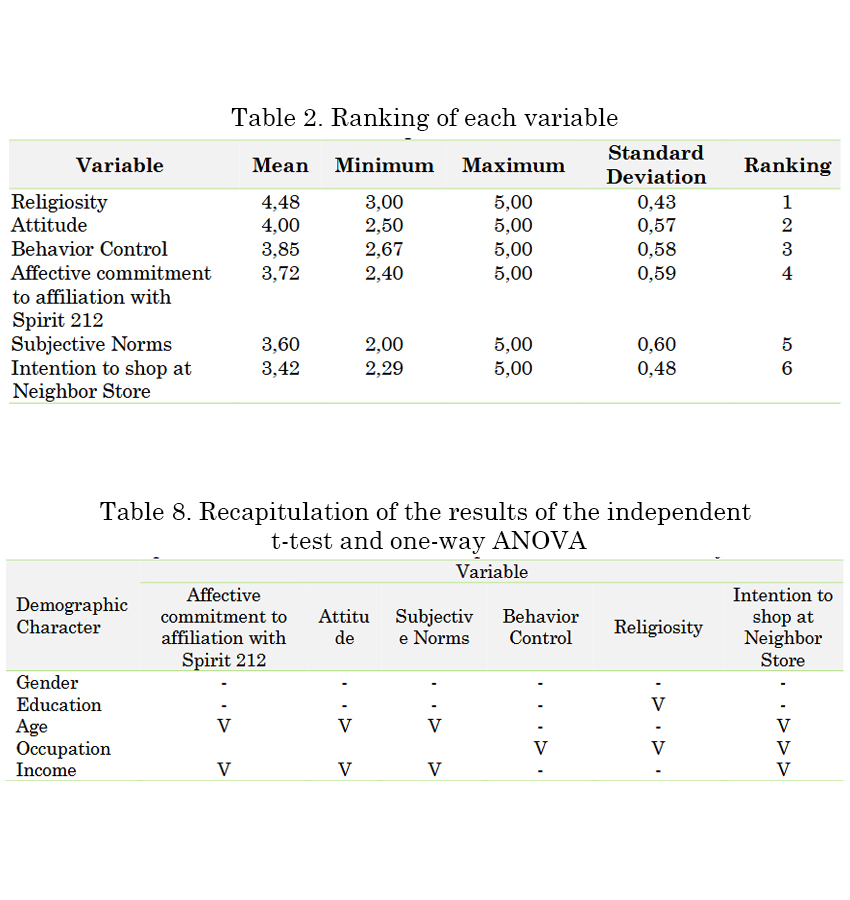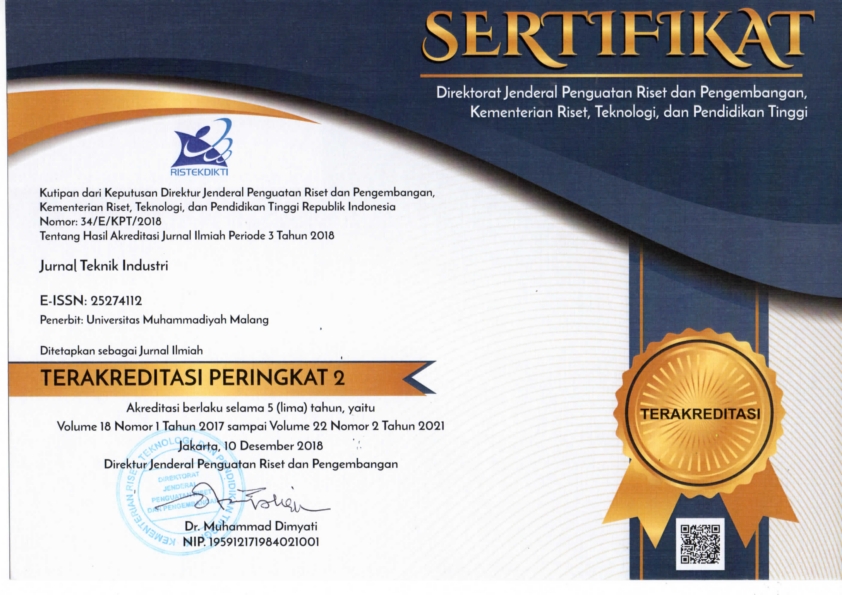The Effect of Demographic Character on the Intention of Muslim Consumer Behavior to Shop at Neighbor Store
DOI:
https://doi.org/10.22219/JTIUMM.Vol20.No1.85-93Keywords:
Behavioral, Shop, Muslim, ConsumerAbstract
This study aims to find out factors related to the behavioral intention of Muslim consumers to shop in neighborhood stores. The Islamic leaders urged the Muslim community to do the social movement to buy for neighborhoods. Its movement is as one form of spirit 212. Spirit of the actions of Muslims in Indonesia in December 2016 through prayer and prayer together to strengthen the kinship of Muslims. The behavioral intention of Muslim consumers to shop at a neighborhood store in Yogyakarta is thought to be influenced by attitude, subjective norms, behavioral control, religiousness, and affective commitment to be affiliated with spirit. Consumers have the characteristics of adhering to Islamic principles. Demographic characters are also considered to influence consumer preferences for each factor. In the descriptive analysis, the average respondent's answer to religious factors has the highest score than other factors. In the independent t-tests and ANOVA, the average responses of answers on gender significantly different on education, age, occupation, and income.
Downloads
References
[1] A. Na’im and H. Syaputra, Kewarganegaraan, suku Bangsa, agama, dan bahasa sehari-hari penduduk Indonesia: Hasil Sensus Penduduk 2010. Jakarta: Badan Pusat Statistik (BPS), 2011.
[2] T. Aryanti, "Analisis Perilaku Konsumen Dalam Pemilihan Tempat Belanja Dengan Pendekatan Analytical Hierarchy Process (Studi Kasus Pada Masyarakat Di Kota Depok)," Universitas Gunadarma, Jakarta, 2012.
[3] G. T. Hariyadi, "Faktor-Faktor Yang Mempengaruhi Konsumen Berbelanja Di Minimarket (Studi pada Indomaret dan Alfamart di Semarang)," 2017, vol. 1, 2017. https://doi.org/10.33633/jpeb.v1i1.1475.
[4] S. Sunanto, "Modern retail impact on store preference and traditional Retailers in West Java," Asian Journal of Business Research, vol. 2, pp. 1-19, 2012. https://ssrn.com/abstract=2345170.
[5] P. Widayat, "Pemberdayaan Ekonomi Umat dengan Pengembangan Usaha “Kita Mart” Yang Berbasis Jamaah," Jurnal Diklat Review, vol. 1, pp. 172-175, 2017. http://ejournal.kompetif.com/index.php/diklatreview/article/view/172.
[6] W. Jatiningrum and A. Astuti, "Theorizing of spirit 212 in predicting Muslim behavioral intentions: A hypothesized model," in IOP Conference Series: Materials Science and Engineering, 2018, p. 012047. https://doi.org/10.1088/1757-899X/403/1/012047.
[7] A. S. Pamungkas and G. Octaviani, "Aksi bela islam dan ruang publik muslim: dari representasi daring ke komunitas luring," Jurnal Pemikiran Sosiologi, vol. 4, pp. 65-87, 2017. https://doi.org/10.22146/jps.v4i2.28581.
[8] M. Hamid, "Islamic economics: An introductory analysis," Englishversion, first-edition, pp. 142-144, 2009.
[9] B. Hossain, "Application of Islamic Consumer Theory: An Empirical Analysis in the Context of Bangladesh," Global Review of Islamic Economics and Business, vol. 2, pp. 069-083, 2015. https://doi.org/10.14421/grieb.2014.021-05.
[10] H. N. Boone and D. A. Boone, "Analyzing likert data," Journal of extension, vol. 50, pp. 1-5, 2012. https://www.joe.org/joe/2012april/tt2.php.
[11] W. Budiaji, "Skala pengukuran dan jumlah respon skala likert," Jurnal Ilmu Pertanian dan Perikanan, vol. 2, pp. 127-133, 2013.
[12] J. Carifio and R. J. Perla, "Ten common misunderstandings, misconceptions, persistent myths and urban legends about Likert scales and Likert response formats and their antidotes," Journal of Social Sciences, vol. 3, pp. 106-116, 2007.
[13] D. C. Montgomery, "Design and Analysis of Experiments, Eight Ed.," A. J. W. Sons, Ed., ed: Inc, 2013.
[14] M. Mursidi, "Pengaruh Pendidikan dan Pelatihan Terhadap Kinerja Karyawan Universitas," Jurnal Teknik Industri, vol. 10, p. 8, 2012. https://doi.org/10.22219/JTIUMM.Vol10.No2.120-127.
[15] M. Mursidi, "Variabel-Variabel yang Mempengaruhi Keputusan Konsumen Menginap Di University Inn Umm," 2012, vol. 11, p. 7, 2012. https://doi.org/10.22219/JTIUMM.Vol11.No1.56-62.
[16] H. M. Kholik and D. A. Krishna, "Analisis Tingkat Kebisingan Peralatan Produksi Terhadap Kinerja Karyawan," 2012, vol. 13, p. 7, 2012. https://doi.org/10.22219/JTIUMM.Vol13.No2.194-200.
[17] S. Wahyuni. Umur dan Jenis Kelamin Penduduk Indonesia Hasil Sensus Penduduk 2010 [Online].
[18] A. M. Mulkhan, "Humanisasi pendidikan islam," Tashwirul Afkar, vol. 11, pp. 17-25, 2001.
[19] P. R. Centre, "In America, Does More Education Equal Less Religion?," ed, 2017.
[20] V. L. Bengtson, M. Silverstein, N. M. Putney, and S. C. Harris, "Does religiousness increase with Age? Age changes and generational differences over 35 Years," Journal for the Scientific Study of Religion, vol. 54, pp. 363-379, 2015. https://doi.org/10.1111/jssr.12183.

Downloads
Published
How to Cite
Issue
Section
License
Copyright (c) 2019 Wandhansari Sekar Jatiningrum, Amalia Yuli Astuti

This work is licensed under a Creative Commons Attribution-ShareAlike 4.0 International License.











